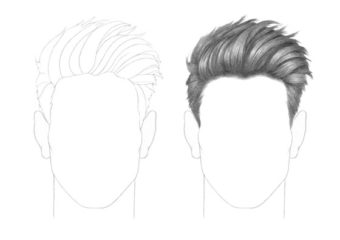Absolute Beginner Drawing Exercises Tutorial
If you are an absolute beginner artist looking to learn to draw this tutorial provides some beginner drawing exercises that can help you improve more quickly. Similar exercises are often used by art and design students and those who want to become professionals in art related fields.
The exercises listed below can be done for a few minutes each day or every other day. You can mix things up and do different types of exercises on different days. Be sure not to overdo these and to still draw the things you like drawing. If you only focus on drawing exercises you may get bored and lose interest in drawing all together.
At the same time it’s also very important to take these exercises seriously and to try and accomplish what each exercise suggest to the best of your ability. If you simply try and get through them as fast as you can without any effort you will have little to no results.
For an overall introduction to drawing you can also check out:
Beginner Guide to Learning to Draw
Exercise 1 – Drawing Straight Lines

As a total beginner line drawing is where you should start. Drawing long straight lines is a great exercise for building a steady hand and a must have ability for any good artist.
One line exercise that you can do is to simply draw straight lines in different directions using pencil and paper. You can overlap the lines but don’t turn your paper into a total mess where you can’t tell the lines apart. If there are too many get a fresh sheet.
You can also draw entire sets of lines going in on direction horizontally, vertically, and at different angles. You can further up the difficulty by trying to draw all of the lines roughly the same distance from one another.
Be sure not to press on the pencil/pen too hard when drawing these and to keep your hand reasonably relaxed.
Exercise 2 – Drawing Curved Lines

Similar to the straight lines exercise you can draw long and steady curved lines or “wave like lines.
You can again do this using overlapping lines and sets of duplicate lines drawn in different directions or tracing the shape of the previous line.
Once again you can try and keep roughly the same amount of spacing when drawing sets of curves.
Exercise 3 – Drawing Transitioning Lines

For this exercise draw two different lines (for example two curved lines in different directions) and between these two draw a set of lines where with each line you make a small change towards matching the bend of the second line.
The goal is to eventually have a smooth transition of lines going from one curve into the other.
This exercise will both train your eye and your hand.
Exercise 4 – Drawing Basic Geometric Shapes

A slightly more complex exercise is to draw basic shapes such as circles, squares, triangle, etc…
These will both help steady your hand and train you to catch your own mistakes.
For example it’s a lot easier to tell if a circle is round or not then it is to see a mistake in a more complex drawing with multiple shapes. At the same time it can be quite challenging to draw a good circle.
Another benefit of drawing these shapes is that more complex objects can often be broken down into simpler shapes. If you can draw these shapes well you can use them to help you construct a more complex drawing.
When doing this exercise you can practice shapes of different sizes and random placement and you can also draw neatly arranged shapes of the same size (to the best of your ability).
Exercise 5 – Drawing Lines Through Shapes & Shapes in Shapes

Based on the previous shape drawing exercise you can can then draw some lines through the geometric shapes such as squares or rectangles.
These exercises will help train your eye as you sort of have to “aim” to hit the corners as well as help steady you hand as you have to make a fairly straight line for this to work.
In addition to doing this you can also draw one shape inside another. For example you can draw a circle inside a square that is divided into four parts by drawing a curve in each one of these.
An additional benefit of doing this is that it can also make it easier to see if any part of the circle is off as the surrounding square (if properly drawn) will give you a good way to judge the positioning of the four curves.
Exercise 6 – Shading Using Different Stroke Types

You can practice shading any of the basic shapes above using different types of strokes. The goal is to have the same level of shading through the entire shape where no one part of the object stands out.
For actual pencil drawing examples of different stroke types you can see:
Shading Techniques and Stroke Types Drawing Tutorial
Please note that later on when drawing 3d objects you can also make strokes that will follow the shape of the object but as a beginner simple being able to make steady one direction or cross hatch strokes is a good start.
You can see an example of this in:
Egg Step by Step Basic Shading Tutorial
Conclusion
This tutorial covers some of the most basic drawing exercises you can do to improves your artistic skills. If you would like something a little more advanced or are just wondering where you can go from here check out the following:









